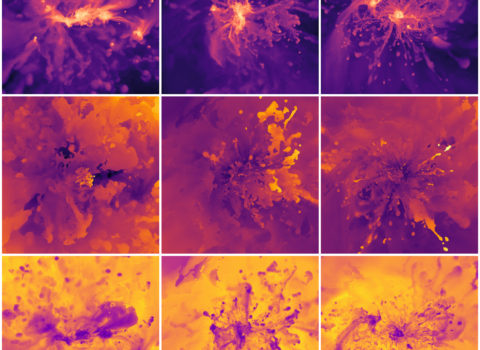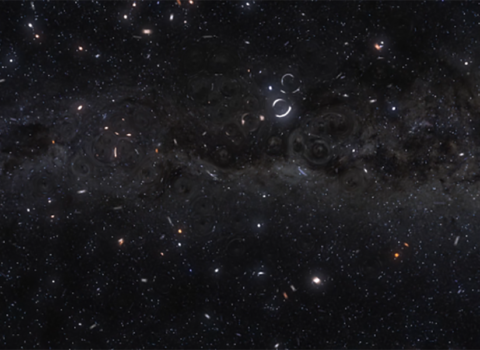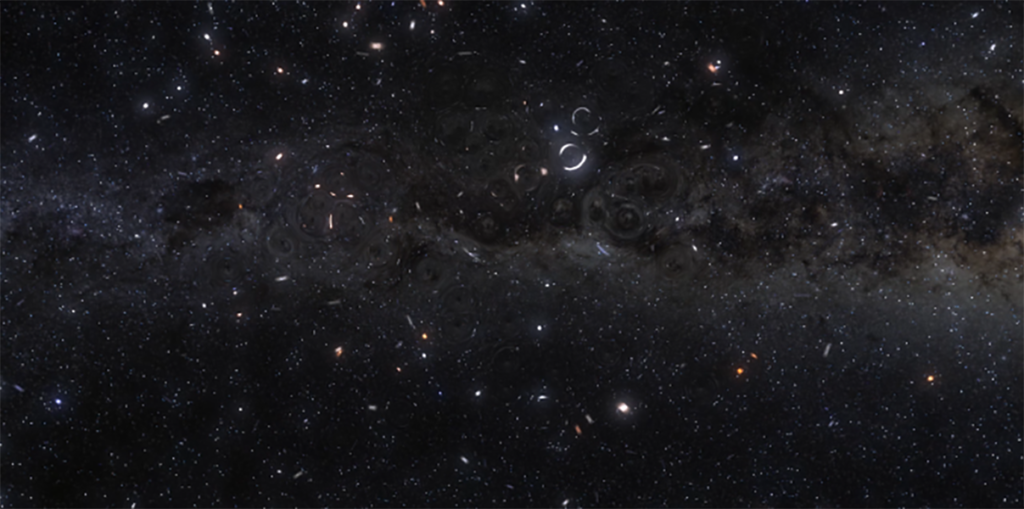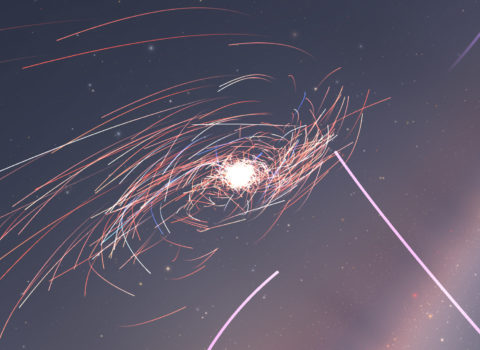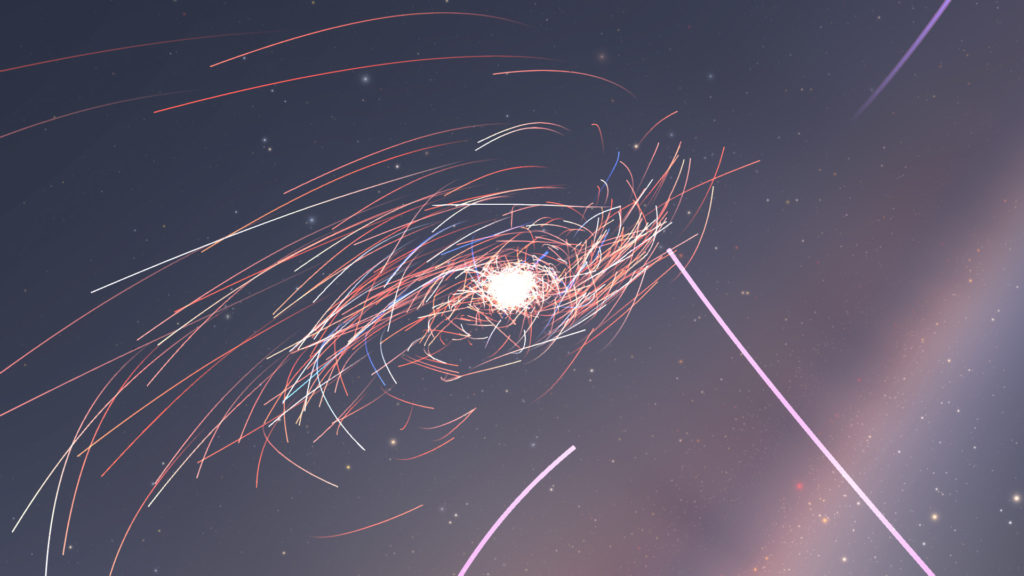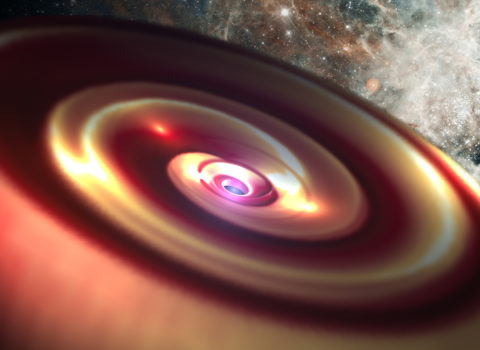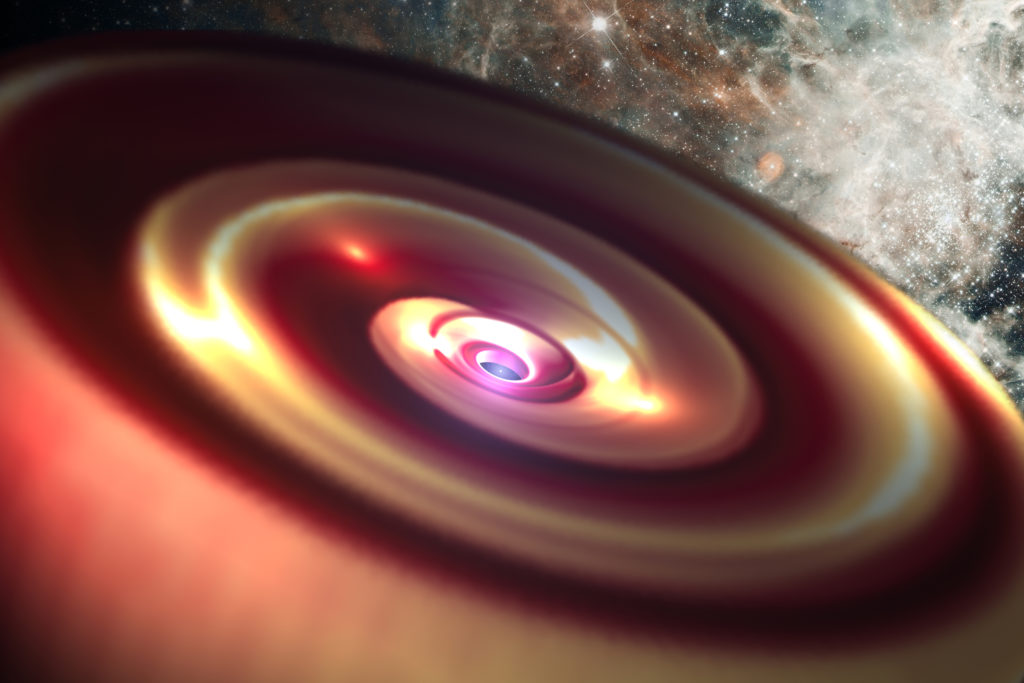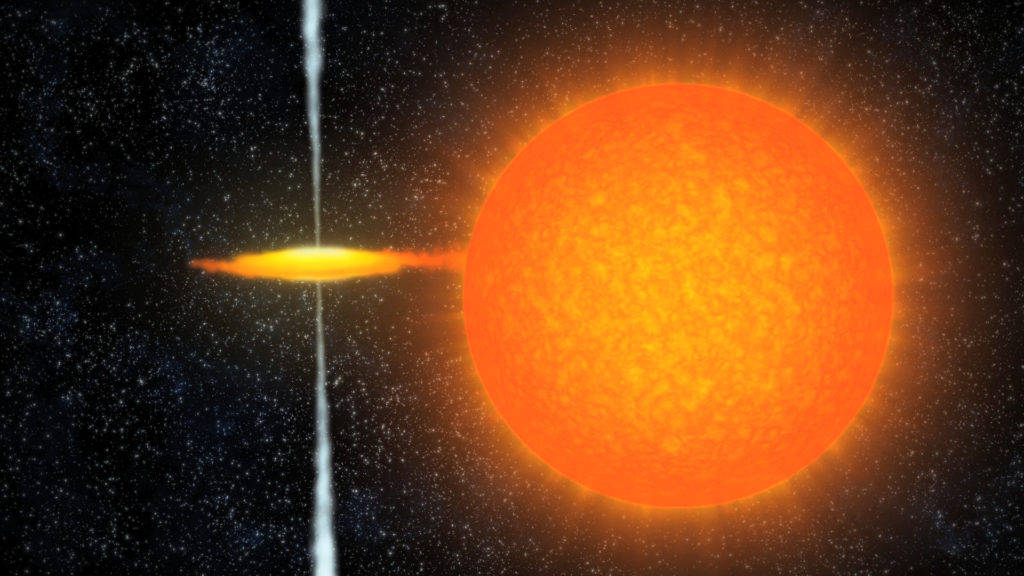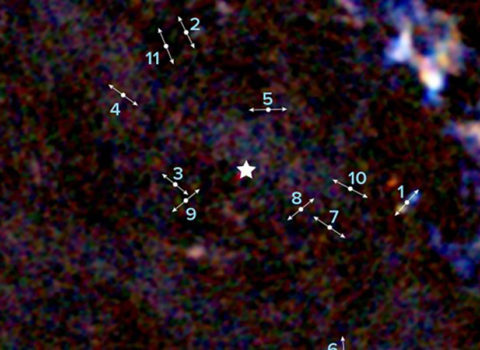
Gas Outflows Near Milky Way’s Central Black Hole
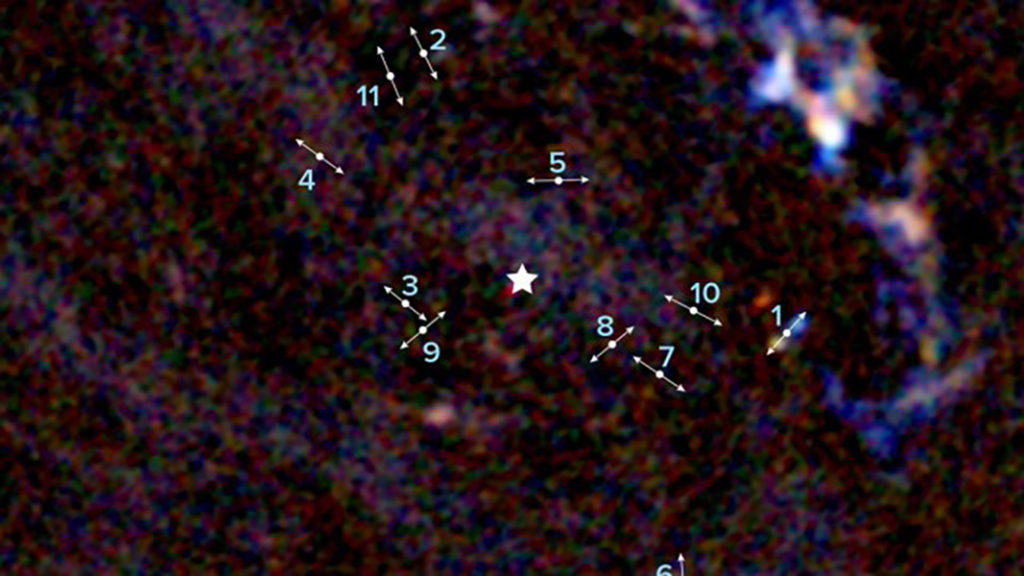
Gas Outflows Near Milky Way’s Central Black Hole
Marked on this ALMA image are the locations and orientations of 11 gas outflows, which look like the bipolar lobes made by young protostars. These outflows are all within about 3 light-years of our galaxy’s supermassive black hole, marked with a star. Outflow #1 has the most obvious structure; the rest don’t show up well
ALMA (ESO/NAOJ/NRAO), Yusef-Zadeh et al.; B.Saxton (NRAO/AUI/NSF)


